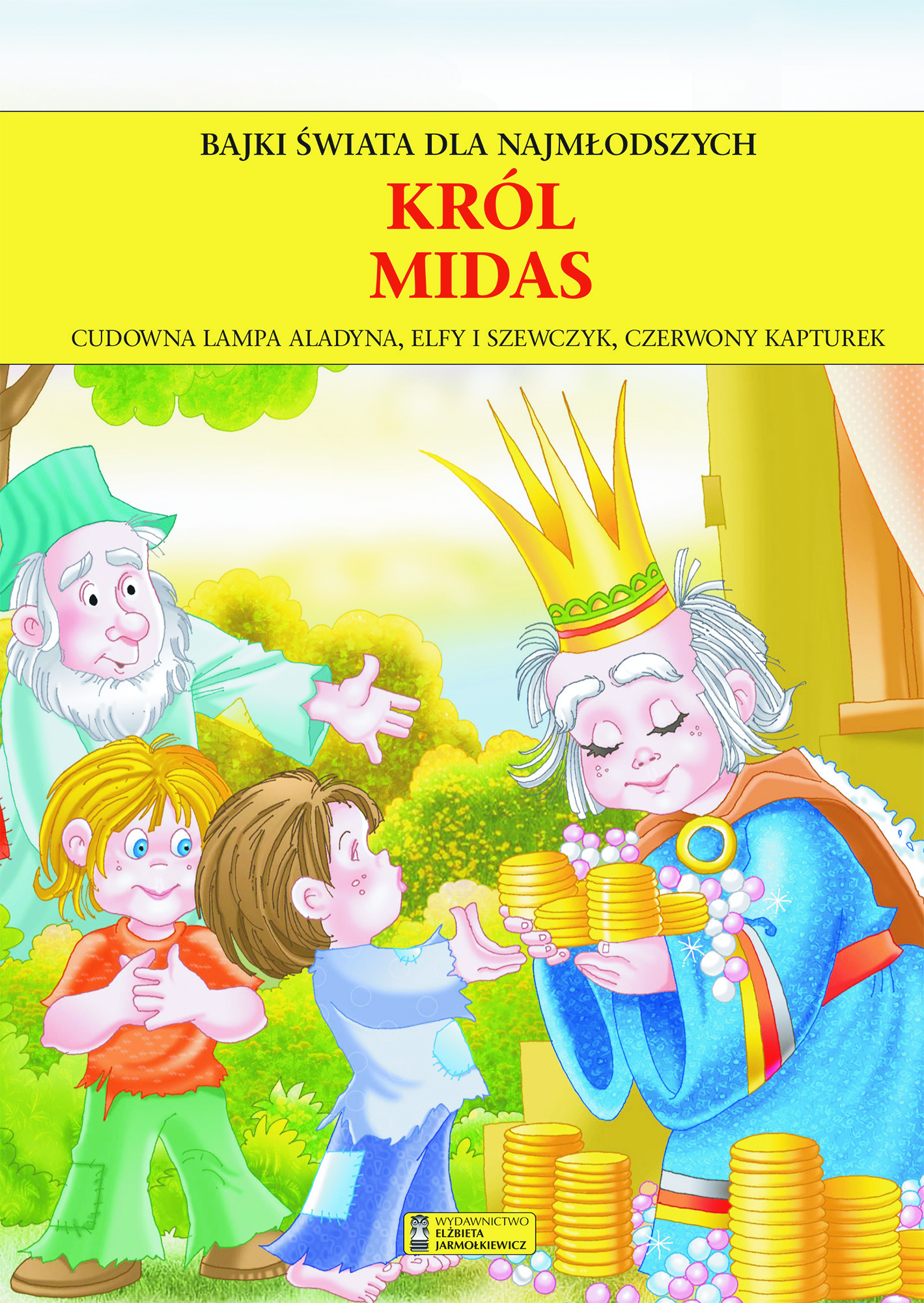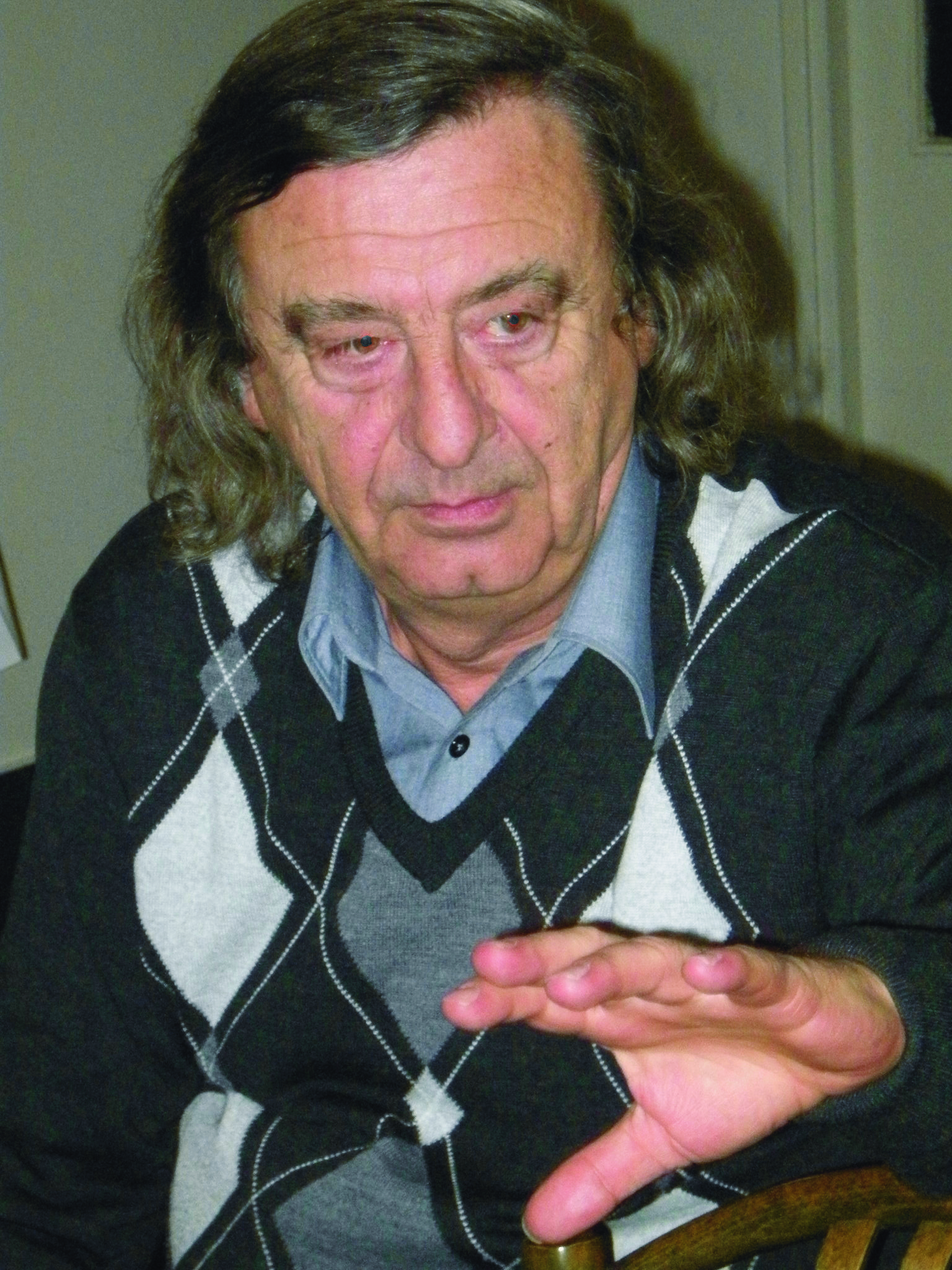Title of the work
Country of the First Edition
Country/countries of popularity
Original Language
First Edition Date
First Edition Details
Andrzej Gordziejewicz-Gordziejewski, "Król Midas" in Andrzej Gordziejewicz-Gordziejewski, Król Midas. Cudowna lampa Alladyna. Elfy i szewcy. Czerwony Kapturek, “Bajki świata dla najmłodszych”, okładka i ilustracje Harvinder Mankad. Zielona Góra: Wydawnictwo Elżbieta Jarmołkiewicz, 2010, 43 pp., 3–12.
ISBN
Genre
Adaptations
Myths
Picture books
Target Audience
Children (1–5)
Cover

Scan of the cover kindly provided by Wydawnictwo Elżbieta Jarmołkiewicz.
Author of the Entry:
Summary: Małgorzata Glinicka, University of Warsaw, muktaa.phala@gmail.com
Analysis: Hanna Paulouskaya, University of Warsaw, hannapa@al.uw.edu.pl
Peer-reviewer of the Entry:
Elżbieta Olechowska, University of Warsaw, elzbieta.olechowska@gmail.com
Katarzyna Marciniak, University of Warsaw, kamar@al.uw.edu.pl
Photograph courtesy of the Author.
Andrzej Gordziejewicz-Gordziejewski
, b. 1947
(Author)
Andrzej Gordziejewicz-Gordziejewski was born March 3, 1947, in Warsaw. He has a MA in Slavic Studies (specialization: Czech & Slovak philology). Between 1971–1985 he worked at the Institute of Slavic Studies of the Polish Academy of Sciences; from 1985–2009, he was a content editor at the publishing house “Czytelnik”. He was also a translator and advocate of Czech and Slovak literature, including literature for children and adolescents; he authored minor publications in the same area of literature, including the series Bajki świata dla najmłodszych [Fairy Tales from All Over the World for the Very Young].
Source:
Information for the bio kindly provided by the Author.
Bio prepared by by Małgorzata Glinicka, University of Warsaw, muktaa.phala@gmail.com
Summary
Based on: Katarzyna Marciniak, Elżbieta Olechowska, Joanna Kłos, Michał Kucharski (eds.), Polish Literature for Children & Young Adults Inspired by Classical Antiquity: A Catalogue, Faculty of “Artes Liberales”, Warsaw: University of Warsaw, 2013, 444 pp.
This short story is full of vivid illustrations and descriptions of fabulous creatures; it is made for very young children. It is based on the traditional version of the myth. Midas, King of Phrygia, asks a famous wizard to multiply his treasures using magic. As a result, Midas acquires “the golden touch,” the ability to turn everything into gold. This unique gift becomes a terrible curse for him.
Analysis
This picture book is a part of a series, “Fairy Tales from All Over the World for Very Young Children,” and presents a simple version of the myth, written in fairy-tale style, full of colourful illustrations.
The king is presented as “powerful” and “very greedy”, someone who seeks only gold and pays no attention to the needs of his subjects (p. 4).
Contrary to Ovid, it is not Dionysos’ gift, rewarding Midas for his hospitality, that causes problems (Met. 11.100–104). Midas asks a wizard to become richer with the help of his magic (p. 5). Similarly to Ovid, the inability to eat and drink is the most distressing for Midas (p. 8; cf. Ovid Met. 11.119–130). However, the emphasis is placed on the transformation of the king’s daughter into a golden statue (p. 9), a motif used already by Nathaniel Hawthorne in his A Wonder Book for Boys and Girls (1851)*, as well as by the Polish author Maria Buyno-Arctowa (Jagmin), Midas. Złoty król (1931). This version is very appealing to young children. And the father’s reaction and request to take the gift away is an expected development. The king confesses that his daughter means more to him than all his treasures (p. 10). As a result “[t]he wizard waved his magic wand and everything around him reverted to what it was before” ([Mag skinął swoją czarodziejską różdżką i wszystko wokół przybrało swoją dawną postać], p. 11). The story ends with Midas giving his treasures to poor people; it is emphasized by an illustration of children in patched clothes receiving gold coins from the king, a motif rather unusual in the reception of this mythical story. The last picture shows the beautiful little princess who is astounded at being transformed into a golden statue. Love for his child was the main reason for Midas’ change of heart. Introducing a beautiful princess and a sorcerer brings the Greek myth into the realm of fairy tales.
* For more on the reception of Midas’ myth in children’s literature see Elizabeth Hale and Miriam Riverlea, Classical Mythology and Children’s Literature: An Alphabetical Odyssey, Warsaw: Warsaw University Press, 2022, 58–60.
Further Reading
Elizabeth Hale and Miriam Riverlea, Classical Mythology and Children’s Literature: An Alphabetical Odyssey, Warsaw: Warsaw University Press, 2022.



